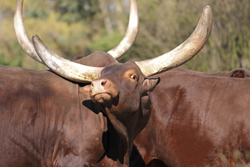Triple attack on ruminant infections
Rinderpest (RP) and Peste des petits ruminants (PPR) are considered amongst the most deadly infectious diseases of livestock. Endemic in Africa and Asia, the infectious pathogens are included in the list of most serious pathogens worldwide. Considerable efforts are being made to prevent spreading of these diseases over the borders and warrantee safe animal products. Vaccination is currently the only means of controlling disease. The key aim of the EU-funded RP/PPR Markvac initiative was to develop effective vaccination against RP and PPR diseases to protect livestock. Additionally, project partners wished to develop diagnostic methods that could distinguish between infected and vaccinated animals. Vaccine development was based on reverse genetics of current attenuated strains and genetically modified organisms (GMOs). The new generation vaccines were characterised by the consortium in terms of biological activity, stability, delivery route and efficiency. The efficiency of these vaccines was assessed by improved ELISA-based diagnostic tests formulated to detect antibodies to vaccine markers (positive and negative markers). These tests would also help understand the epidemiology of RP and PPR. To aid the surveillance of RP and PPR, a geographical information system (GIS) was established with whole country maps of disease frequency, models of disease transmission and decision support for intervention. This information could be used to formulate strategies for the surveillance and control of PPR in enzootic countries. The combination of enhanced diagnosis, improved vaccines and systems technology for disease surveillance offers a more precise way of targeting vaccination and establishing control measures. Implementation of the RP/PPR Markvac approach in areas at risk of infection is hoped to minimise outbreaks and viral spreading, thereby sustaining livestock husbandry and improving rural economies.







